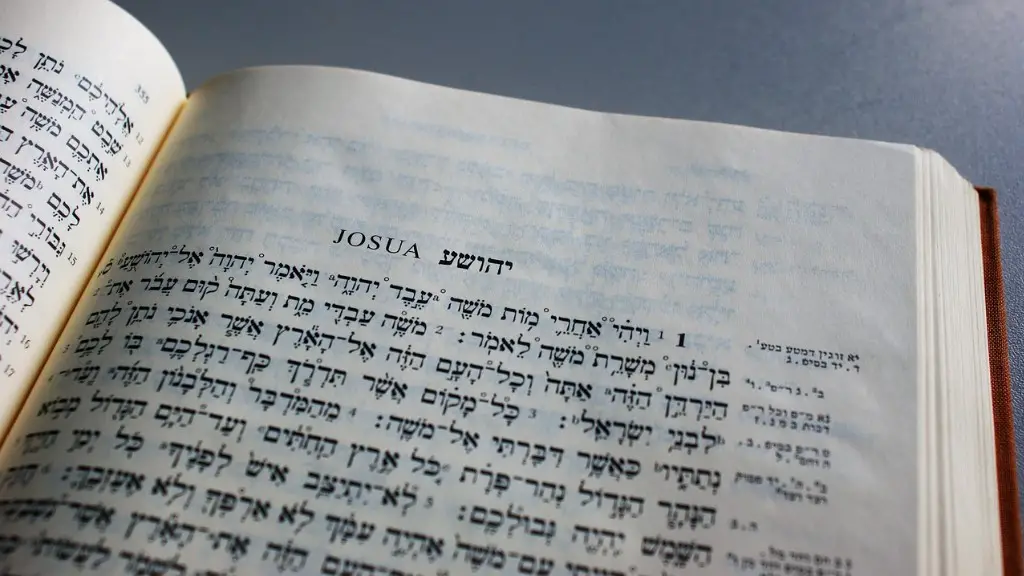Christianity is one of the major world religions and has a rich, lengthy history. It is often divided into branches and often the number of branches is debated. The main branches of Christianity are Orthodox, Catholic, and Protestant, though there are several dozen other “denominations” within these branches. Some of the denominations are quite distinct while others are quite similar.
The Orthodox tradition includes churches like the Greek Orthodox and the Russian Orthodox. These churches share a common liturgy and are similar in terms of theology and practices. However, there is a certain level of independence among the different churches. For example, the Greek Orthodox Church and the Russian Orthodox Church are both autonomous but still recognize each other’s decisions.
The Catholic branch includes several churches that share a common structure and beliefs but have some distinct differences in the areas of governance and practice. These churches include the Roman Catholic Church, the Ukrainian Catholic Church, the Maronite Church, and the Syro-Malabar Church.
The Protestant branch is much more diverse than the other two branches and includes a broad range of Christian denominations. Many Protestant denominations are rooted in the 16th century Reformation and are derived from the work of reformers such as Martin Luther and John Calvin.
Within these three main branches, there are dozens of Christian denominations. Depending on the definition used, there could be as many as 80 different denominations in Christianity, although this number varies depending on the respective source of the data.
Different denominations often have varying views on certain issues and many have different opinions on certain topics. For example, some denominations believe in predestination while others do not. Some denominations are open to different sexual orientations while others are not. The differences between Christan denominations can be quite significant, so it is important to be aware of the distinctions between them when engaging in any type of dialogue.
Despite the differences between denominations, there is a common foundation of belief and practice that lies at the heart of all branches and denominations. This common thread runs through all of the different branches and denominations, allowing for an overall unity despite the differences.
Catholicism
The Catholic branch of Christianity is the largest Christian denomination, accounting for roughly half of all Christians worldwide. It is represented by the Roman Catholic Church and its many branches. The Church has a long, rich history and its adherents are characterized by a shared set of beliefs and practices.
Catholicism is grounded in the teachings of Jesus Christ and the early Church fathers, and emphasizes a personal relationship with God through faith and good works. Key theological elements include the Trinity, papal authority, the sanctity of life, and the primacy of scripture.
The Roman Catholic Church is presided over by a Patriarch, currently represented by Pope Francis. It is a hierarchical Church with a strong emphasis on the traditional liturgy. There are various branches of the Church, including Eastern Catholic Churches, Latin Rite, and Independent Catholics.
Protestantism
Protestantism is a branch of Christianity that emerged in the 16th century Reformation and was characterized by a rejection of many elements of the Catholic Church. The Reformers wanted to return to a simpler form of Christianity, characterized by a reliance on scripture, a rejection of elaborate rituals, and a greater emphasis on the grace of God.
In addition to a renewed emphasis on scripture, Protestantism also championed a new approach to worship. Services became less formal and more accessible, with congregants being given opportunities to respond and interact during services. This shift also impacted the way in which Christians viewed their relationship with God, with it becoming more personal than strictly hierarchical.
Today, Protestantism is the second largest Christian denomination, with close to 500 million followers worldwide. There are many different branches of Protestantism, including Anglican, Presbyterian, Baptist, Lutheran, Methodist, and Reformed. Each of these branches has their own distinctive beliefs and practices, making them distinct from one another.
Orthodoxy
The Orthodox tradition is the third largest of the three main branches of Christianity and has close to 300 million adherents. This branch is characterized by a shared set of beliefs, generally centered around a certain type of liturgy and commonly referred to as the “Mystical Tradition.”
The Orthodox tradition is a hierarchical church, with a strong emphasis on liturgy and tradition. The various Orthodox Churches maintain a commonality of beliefs while still having some distinct elements that separate them. The different Churches include the Greek Orthodox Church, the Russian Orthodox Church, the Serbian Orthodox Church, and other Eastern Orthodox Churches.
Orthodoxy holds a strong emphasis on the tradition of the Church and is wary of change and innovation. It is often viewed as a more conservative tradition, with emphasis put on the ancient teachings of Jesus Christ.
Evangelicalism
Evangelicalism is a movement within Christianity that emerged in the 19th and 20th centuries. It is primarily an evangelical movement focused on evangelization, evangelism, and revivalism. Its adherents are characterized by a shared set of beliefs and practices, including a high view of scripture, a personal relationship with Jesus Christ, and an emphasis on evangelism, missions, and moral living.
The movement is divided into several different denominations, including Baptist, Pentecostal, and Charismatic. These denominations share a commonality of beliefs and practices while still having some distinct differences. For example, Pentecostals emphasize a personal experience with the Holy Spirit whereas Charismatics emphasize a more holistic approach to faith.
Non-denominational Christianity
Non-denominational Christianity is a movement that has grown in popularity recently. Non-denominational believers typically reject traditional denominations and instead focus on a more personal relationship with Jesus Christ. They generally reject the structures and hierarchy of traditional denominations and instead focus on a more informal approach to Christianity.
Non-denominational Christians usually accept the four core elements of Christianity (belief in the Trinity, the Kingdom of God, the redemptive work of Jesus, and the Resurrection). Unlike other denominations, they often reject many doctrines and practices that have become associated with traditional denominations. These include things like baptismal regeneration, the sacraments, and the traditional liturgy.
The Multiple Perspectives of Christianity
Regardless of the number of branches in Christianity, the core values remain the same. Christians across the denominations share a basic belief in Jesus Christ as the savior and an understanding of salvation through grace. All Christians view the Bible as the inspired Word of God and seek to live a life of service to others. Different denominations often have varying opinions on certain topics, but these opinions remain within the same framework and should not be viewed as indicative of a larger divide between the denominations.
Ultimately, Christians should not let the differences between denominations prevent them from finding a unity in their faith. Despite their differences, all of the branches and denominations of Christianity are built upon a common foundation. By opening up dialogue and understanding, Christians can move past the cultural and theological differences to create a shared vision of faith.

